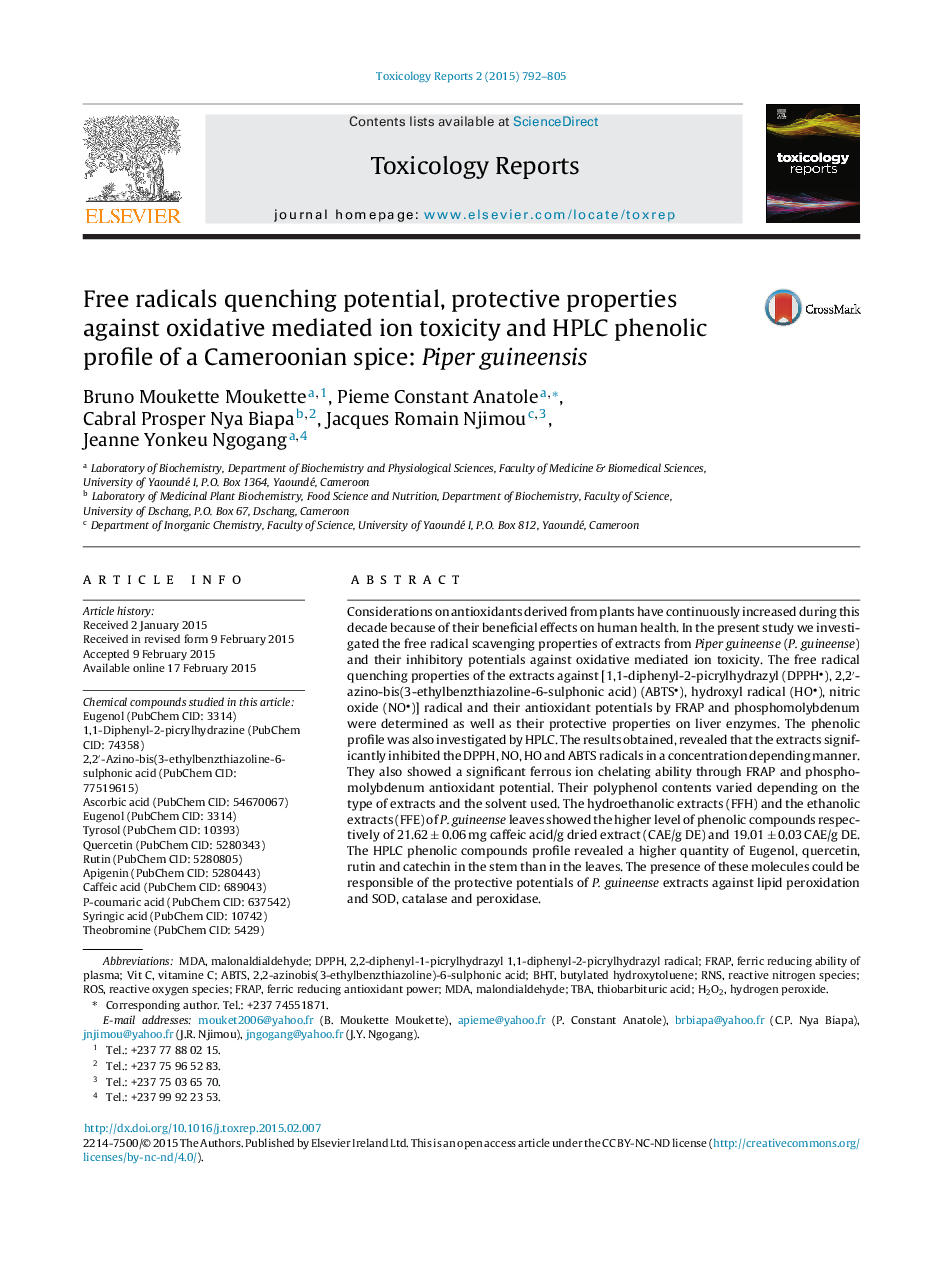| Article ID | Journal | Published Year | Pages | File Type |
|---|---|---|---|---|
| 2572274 | Toxicology Reports | 2015 | 14 Pages |
Considerations on antioxidants derived from plants have continuously increased during this decade because of their beneficial effects on human health. In the present study we investigated the free radical scavenging properties of extracts from Piper guineense (P. guineense) and their inhibitory potentials against oxidative mediated ion toxicity. The free radical quenching properties of the extracts against [1,1-diphenyl-2-picrylhydrazyl (DPPH), 2,2′-azino-bis(3-ethylbenzthiazoline-6-sulphonic acid) (ABTS), hydroxyl radical (HO), nitric oxide (NO)] radical and their antioxidant potentials by FRAP and phosphomolybdenum were determined as well as their protective properties on liver enzymes. The phenolic profile was also investigated by HPLC. The results obtained, revealed that the extracts significantly inhibited the DPPH, NO, HO and ABTS radicals in a concentration depending manner. They also showed a significant ferrous ion chelating ability through FRAP and phosphomolybdenum antioxidant potential. Their polyphenol contents varied depending on the type of extracts and the solvent used. The hydroethanolic extracts (FFH) and the ethanolic extracts (FFE) of P. guineense leaves showed the higher level of phenolic compounds respectively of 21.62 ± 0.06 mg caffeic acid/g dried extract (CAE/g DE) and 19.01 ± 0.03 CAE/g DE. The HPLC phenolic compounds profile revealed a higher quantity of Eugenol, quercetin, rutin and catechin in the stem than in the leaves. The presence of these molecules could be responsible of the protective potentials of P. guineense extracts against lipid peroxidation and SOD, catalase and peroxidase.In conclusion, P. guineense extracts demonstrated significant antioxidant property and may be used as a prospective protector against metal related toxicity.
